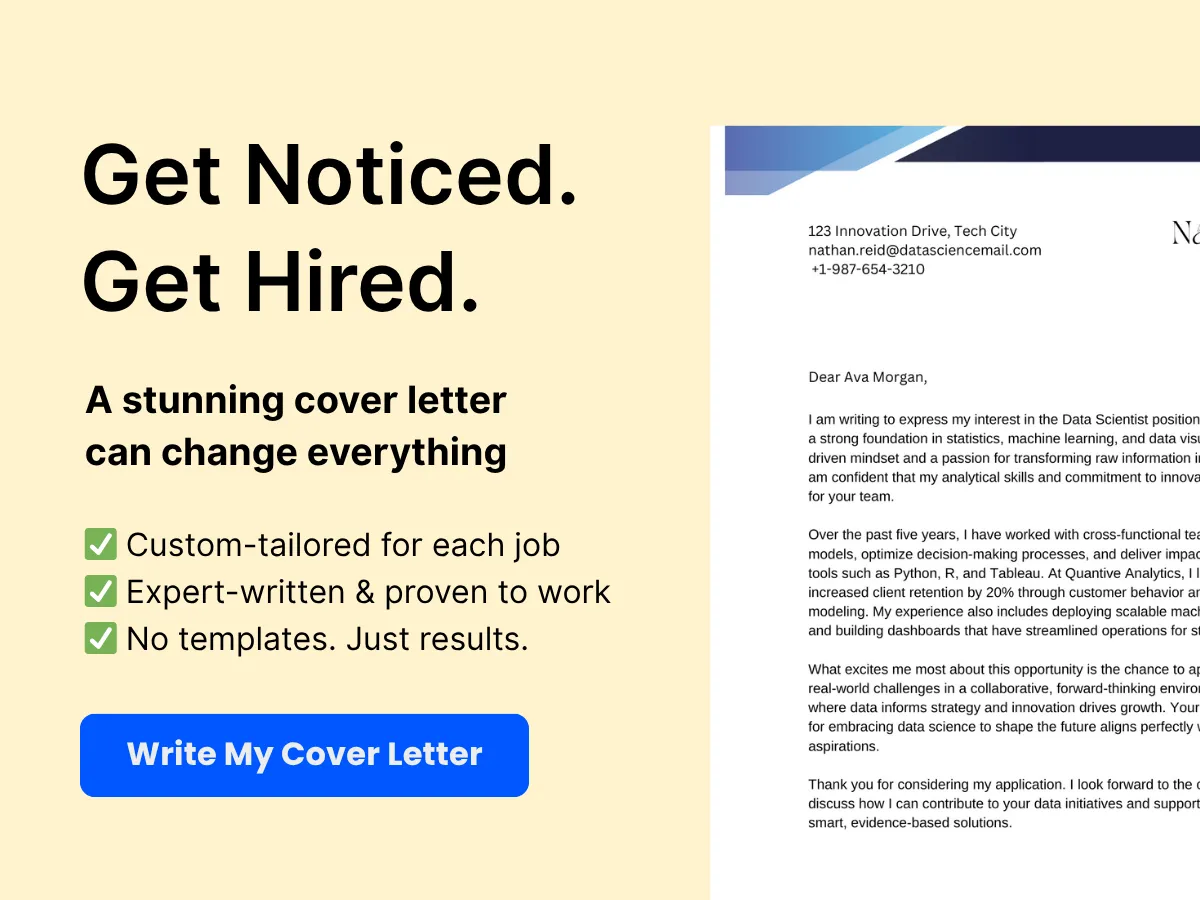In today’s dynamic business landscape, the role of a Human Resources Director has evolved into a pivotal position that shapes the culture and success of an organization. As the strategic leader of the HR department, the Human Resources Director is not only responsible for managing talent but also for aligning human capital strategies with the overall goals of the company. This multifaceted role encompasses a wide range of responsibilities, from recruitment and employee development to compliance and organizational planning.
Understanding the comprehensive job description of a Human Resources Director is essential for both aspiring HR professionals and organizations looking to enhance their HR functions. This article delves into the key responsibilities, skills, and qualifications that define this critical role. Readers can expect to gain insights into the strategic importance of HR leadership, the challenges faced in the field, and the impact of effective human resource management on organizational performance. Whether you are considering a career in HR or seeking to refine your HR practices, this exploration will equip you with the knowledge needed to navigate the complexities of this vital position.
Key Responsibilities
Strategic Planning and Development
The role of a Human Resources Director (HRD) is pivotal in shaping the strategic direction of an organization. This begins with strategic planning and development, where the HRD collaborates with senior management to align human resources initiatives with the overall business strategy. This involves analyzing the current workforce, identifying gaps, and forecasting future needs based on the organization’s goals.
For example, if a company aims to expand into new markets, the HRD must assess the skills and competencies required for this expansion and develop a plan to recruit or train employees accordingly. This strategic foresight ensures that the organization is not only prepared for immediate challenges but is also positioned for long-term success.
Aligning HR Strategy with Organizational Goals
Aligning HR strategy with organizational goals is a critical responsibility of the HR Director. This involves understanding the business’s mission, vision, and objectives and ensuring that HR practices support these aims. The HRD must communicate effectively with other departments to ensure that HR initiatives, such as talent acquisition and employee development, are in sync with the company’s strategic objectives.


For instance, if a company prioritizes innovation, the HRD might implement programs that foster creativity and collaboration among employees, such as cross-departmental projects or innovation workshops. This alignment not only enhances employee engagement but also drives the organization towards achieving its strategic goals.
Workforce Planning and Talent Management
Workforce planning is another essential responsibility of the HR Director. This involves analyzing the current workforce’s capabilities and forecasting future needs to ensure that the organization has the right talent in place. The HRD must consider factors such as retirements, turnover rates, and industry trends to develop a comprehensive workforce plan.
Talent management goes hand-in-hand with workforce planning. The HRD is responsible for identifying high-potential employees and developing strategies to nurture their growth within the organization. This could include mentorship programs, leadership training, and succession planning to ensure that the organization has a pipeline of talent ready to step into key roles as they become available.
Recruitment and Staffing
Recruitment and staffing are core functions of the HR Director’s role. The HRD must develop effective recruitment strategies that attract top talent while also ensuring a diverse and inclusive workforce. This involves understanding the labor market, leveraging technology for recruitment, and building a strong employer brand.
Developing Recruitment Strategies
To develop effective recruitment strategies, the HR Director must analyze the organization’s needs and the competitive landscape. This may involve creating targeted job descriptions, utilizing social media and job boards, and engaging with recruitment agencies. The HRD should also focus on building relationships with educational institutions to create a pipeline of new graduates entering the workforce.
For example, a tech company may partner with local universities to offer internships, which not only helps in identifying potential hires but also enhances the company’s visibility among young talent.


Overseeing the Hiring Process
Once recruitment strategies are in place, the HR Director oversees the entire hiring process. This includes managing job postings, screening resumes, conducting interviews, and making final hiring decisions. The HRD must ensure that the hiring process is fair, transparent, and compliant with all legal requirements.
Additionally, the HRD should implement structured interview processes and assessment tools to ensure that candidates are evaluated consistently and objectively. This not only helps in selecting the right candidates but also enhances the overall candidate experience.
Employee Relations
Employee relations is a critical area of focus for the HR Director. This involves fostering a positive workplace culture, addressing employee concerns, and ensuring that employees feel valued and engaged. The HRD plays a key role in developing policies and practices that promote a healthy work environment.
Conflict Resolution and Mediation
Conflict resolution is an essential skill for the HR Director. When disputes arise between employees or between employees and management, the HRD must step in to mediate and resolve the issues. This requires strong interpersonal skills, empathy, and the ability to remain neutral.
For instance, if two employees have a disagreement that affects their work, the HRD may facilitate a meeting to help them communicate their concerns and find a mutually agreeable solution. Effective conflict resolution not only resolves immediate issues but also contributes to a more harmonious workplace.
Employee Engagement and Retention Strategies
Employee engagement is crucial for retention, and the HR Director must develop strategies to keep employees motivated and committed to the organization. This may involve conducting employee surveys to gather feedback, implementing recognition programs, and creating opportunities for professional development.


For example, an HRD might introduce a rewards program that recognizes employees for their contributions, thereby fostering a culture of appreciation and encouraging others to excel. Additionally, the HRD should analyze turnover data to identify trends and develop targeted retention strategies for high-risk groups.
Compensation and Benefits
The HR Director is responsible for designing and managing compensation and benefits programs that attract and retain talent. This involves conducting market research to ensure that the organization offers competitive salaries and benefits packages.
Designing Competitive Compensation Packages
Designing competitive compensation packages requires a deep understanding of industry standards and employee expectations. The HRD must work closely with finance and management to develop salary structures that align with the organization’s budget while remaining attractive to potential hires.
For instance, if a company is struggling to attract skilled workers in a competitive market, the HRD may recommend adjustments to salary ranges or the introduction of performance-based bonuses to enhance the overall compensation package.
Managing Benefits Programs
In addition to salary, benefits play a significant role in employee satisfaction. The HR Director must manage benefits programs, including health insurance, retirement plans, and paid time off. This involves evaluating the effectiveness of current offerings and making adjustments based on employee feedback and industry trends.
For example, if employees express a desire for more flexible work arrangements, the HRD might explore options for remote work or flexible hours, thereby enhancing the overall benefits package and improving employee satisfaction.
Training and Development
Training and development are essential components of the HR Director’s responsibilities. The HRD must identify training needs within the organization and implement programs that support employee growth and development.
Identifying Training Needs
Identifying training needs involves assessing the skills and competencies required for various roles within the organization. The HR Director may conduct skills assessments, gather feedback from managers, and analyze performance data to determine where training is needed.
For instance, if a company is implementing new technology, the HRD must ensure that employees receive the necessary training to use the new systems effectively. This proactive approach not only enhances employee performance but also contributes to overall organizational success.


Implementing Development Programs
Once training needs are identified, the HR Director is responsible for implementing development programs. This may include workshops, online courses, mentorship programs, and leadership training initiatives. The HRD must ensure that these programs are accessible and relevant to employees at all levels.
For example, a company may offer leadership development programs for high-potential employees to prepare them for future management roles. This investment in employee development not only enhances individual skills but also strengthens the organization’s leadership pipeline.
Compliance and Legal Issues
Ensuring compliance with labor laws and regulations is a critical responsibility of the HR Director. The HRD must stay informed about changes in employment law and ensure that the organization adheres to all legal requirements.
Ensuring Compliance with Labor Laws
The HR Director must develop and implement policies and procedures that comply with labor laws, including those related to hiring, termination, workplace safety, and employee rights. This involves conducting regular audits and training sessions to ensure that all employees are aware of their rights and responsibilities.
For instance, the HRD may implement training programs on anti-discrimination laws to ensure that all employees understand the importance of diversity and inclusion in the workplace.
Managing Employee Records and Documentation
Managing employee records and documentation is another essential aspect of compliance. The HR Director must ensure that all employee records are accurate, up-to-date, and securely stored. This includes maintaining records related to hiring, performance evaluations, disciplinary actions, and benefits.
Additionally, the HRD must ensure that the organization complies with data protection regulations, safeguarding employee information and ensuring that it is only accessible to authorized personnel.


Performance Management
Performance management is a key responsibility of the HR Director, who must develop systems and processes to evaluate employee performance effectively. This involves creating performance appraisal systems that align with organizational goals and provide meaningful feedback to employees.
Developing Performance Appraisal Systems
The HR Director must design performance appraisal systems that are fair, transparent, and aligned with the organization’s objectives. This may involve implementing 360-degree feedback processes, self-assessments, and regular check-ins between managers and employees.
For example, a company may adopt a continuous feedback model, where employees receive regular feedback throughout the year rather than relying solely on annual reviews. This approach fosters a culture of open communication and continuous improvement.
Conducting Performance Reviews
Conducting performance reviews is a critical aspect of the HR Director’s role. The HRD must ensure that performance reviews are conducted consistently and fairly across the organization. This involves training managers on how to provide constructive feedback and set performance goals.
Additionally, the HR Director should encourage a two-way dialogue during performance reviews, allowing employees to share their perspectives and career aspirations. This collaborative approach not only enhances employee engagement but also supports individual development and growth.
Skills and Qualifications
Educational Requirements
To become a Human Resources Director, candidates typically need a solid educational foundation. A bachelor’s degree in human resources, business administration, psychology, or a related field is essential. This foundational education provides the necessary knowledge of organizational behavior, employment law, and human resource management principles.
Many organizations prefer candidates with a master’s degree, such as a Master of Business Administration (MBA) with a concentration in human resources or a Master of Science in Human Resource Management. Advanced degrees not only enhance a candidate’s understanding of complex HR issues but also demonstrate a commitment to the field, making them more competitive in the job market.


Preferred Degrees and Certifications
In addition to formal education, various certifications can significantly enhance a candidate’s qualifications. The Society for Human Resource Management (SHRM) offers certifications such as the SHRM Certified Professional (SHRM-CP) and the SHRM Senior Certified Professional (SHRM-SCP). These certifications validate a professional’s knowledge and skills in HR practices and are highly regarded in the industry.
Other notable certifications include the Professional in Human Resources (PHR) and the Senior Professional in Human Resources (SPHR) from the HR Certification Institute (HRCI). Additionally, certifications in specialized areas such as talent management, employee relations, or compensation and benefits can further distinguish a candidate in the competitive HR landscape.
Essential Skills
Human Resources Directors must possess a diverse skill set to effectively manage the HR function within an organization. Some of the essential skills include:
- Strategic Thinking: HR Directors must align HR strategies with organizational goals, ensuring that the HR function supports the overall business strategy.
- Talent Management: The ability to attract, develop, and retain top talent is crucial. This includes understanding workforce planning, succession planning, and employee development.
- Compliance Knowledge: A thorough understanding of labor laws and regulations is essential to ensure the organization remains compliant and mitigates legal risks.
- Change Management: HR Directors often lead organizational change initiatives, requiring skills in managing resistance and facilitating smooth transitions.
Leadership and Management Skills
As leaders within the organization, HR Directors must exhibit strong leadership and management skills. This includes:
- Visionary Leadership: HR Directors should inspire and motivate their teams, fostering a culture of engagement and high performance.
- Decision-Making: The ability to make informed decisions quickly is vital, especially in high-pressure situations that affect employee relations or organizational strategy.
- Team Development: HR Directors should focus on building and developing their HR teams, ensuring that team members have the necessary skills and resources to succeed.
- Conflict Resolution: Strong conflict resolution skills are essential for addressing employee grievances and fostering a harmonious workplace environment.
Communication and Interpersonal Skills
Effective communication is at the heart of human resources. HR Directors must possess exceptional verbal and written communication skills to convey policies, procedures, and organizational changes clearly. They must also be adept at:
- Active Listening: Understanding employee concerns and feedback is crucial for building trust and rapport within the organization.
- Negotiation: HR Directors often negotiate employment contracts, benefits packages, and conflict resolutions, requiring strong negotiation skills.
- Empathy: Demonstrating empathy towards employees fosters a supportive workplace culture and enhances employee satisfaction and retention.
Analytical and Problem-Solving Skills
In today’s data-driven environment, HR Directors must possess strong analytical skills to interpret HR metrics and make data-informed decisions. This includes:


- Data Analysis: The ability to analyze employee data, such as turnover rates, engagement scores, and performance metrics, helps HR Directors identify trends and areas for improvement.
- Problem-Solving: HR Directors must be adept at identifying problems within the organization and developing effective solutions, whether related to employee performance, compliance issues, or organizational culture.
- Project Management: Managing multiple HR projects simultaneously requires strong organizational skills and the ability to prioritize tasks effectively.
Experience
Experience is a critical component of becoming a successful Human Resources Director. Employers typically seek candidates with a robust background in various HR functions, including recruitment, employee relations, performance management, and training and development. This experience can be gained through various roles within the HR department, such as HR Generalist, HR Manager, or Talent Acquisition Specialist.
Required Years of Experience
Most organizations require candidates for HR Director positions to have a minimum of 5 to 10 years of progressive HR experience. This experience should ideally include a mix of operational and strategic roles, demonstrating the candidate’s ability to manage day-to-day HR functions while also contributing to long-term organizational goals.
In some cases, organizations may consider candidates with less experience if they have demonstrated exceptional leadership qualities or have a strong track record of success in previous roles.
Relevant Industry Experience
While HR skills are transferable across industries, having relevant industry experience can be a significant advantage. For instance, an HR Director in the healthcare sector may need to understand specific regulations and compliance issues unique to that industry. Similarly, an HR Director in a technology company may need to be familiar with the fast-paced nature of the tech industry and the unique challenges it presents in talent acquisition and retention.
Industry-specific experience allows HR Directors to tailor their strategies and initiatives to meet the unique needs of their organization, making them more effective in their roles. Therefore, candidates should seek opportunities to gain experience in their desired industry, whether through internships, volunteer work, or previous employment.
Challenges and Solutions
Common Challenges Faced by HR Directors
The role of an HR Director is multifaceted and comes with its own set of challenges. One of the most significant challenges is navigating the complexities of labor laws and regulations. With the ever-changing landscape of employment law, HR Directors must stay informed about local, state, and federal regulations to ensure compliance and mitigate legal risks.
Another common challenge is talent acquisition and retention. In a competitive job market, attracting top talent can be difficult, especially for organizations that may not have the same brand recognition as larger companies. Additionally, retaining skilled employees is crucial for maintaining organizational stability and reducing turnover costs.
HR Directors also face the challenge of managing employee performance and engagement. Ensuring that employees are motivated, productive, and aligned with the company’s goals requires ongoing effort and strategic planning. This includes developing effective performance management systems and fostering a positive workplace culture.
Managing Change within the Organization
Change is a constant in today’s business environment, and HR Directors play a critical role in managing organizational change. Whether it’s a merger, acquisition, restructuring, or the implementation of new technologies, HR Directors must guide their organizations through transitions smoothly.
One of the key aspects of managing change is communication. HR Directors must ensure that all employees are informed about the changes, understand the reasons behind them, and know how they will be affected. This requires clear and transparent communication strategies that address employee concerns and provide support throughout the transition.
Additionally, HR Directors must be adept at change management strategies. This includes assessing the impact of change on the workforce, identifying potential resistance, and developing plans to address it. Training and development programs may also be necessary to equip employees with the skills needed to adapt to new processes or technologies.
Addressing Workforce Diversity and Inclusion
Workforce diversity and inclusion are critical issues that HR Directors must address. A diverse workforce brings a variety of perspectives and ideas, which can enhance creativity and innovation. However, managing diversity also presents challenges, such as potential conflicts and communication barriers.
HR Directors must create an inclusive culture where all employees feel valued and respected, regardless of their background. This involves implementing policies and practices that promote diversity in hiring, training, and career advancement. For example, organizations can establish diversity recruitment initiatives, provide unconscious bias training, and create employee resource groups to support underrepresented employees.
Effective Solutions and Best Practices
To overcome the challenges faced by HR Directors, organizations can implement several effective solutions and best practices. One of the most important is investing in HR technology. Modern HR software can streamline processes such as recruitment, onboarding, performance management, and employee engagement, allowing HR Directors to focus on strategic initiatives rather than administrative tasks.
Another best practice is fostering a culture of continuous feedback. Regular check-ins and performance reviews can help identify issues early and provide employees with the support they need to succeed. This approach not only enhances employee engagement but also contributes to a more agile and responsive organization.
HR Directors should also prioritize employee development. Offering training and development opportunities not only helps employees grow their skills but also demonstrates the organization’s commitment to their career advancement. This can lead to higher retention rates and a more skilled workforce.
Implementing Change Management Strategies
Implementing effective change management strategies is essential for HR Directors. One widely recognized model is the ADKAR model, which stands for Awareness, Desire, Knowledge, Ability, and Reinforcement. This model provides a framework for guiding employees through change by addressing their needs at each stage of the process.
1. Awareness: Employees must understand the need for change. HR Directors can facilitate this by communicating the reasons behind the change and its benefits to the organization.
2. Desire: Employees need to have a desire to support and participate in the change. HR Directors can foster this by involving employees in the change process and addressing their concerns.
3. Knowledge: Employees must be equipped with the knowledge to implement the change. This may involve training sessions, workshops, or informational resources.
4. Ability: Employees need to have the ability to implement the change. HR Directors should provide the necessary tools and resources to facilitate this transition.
5. Reinforcement: Finally, HR Directors must reinforce the change to ensure it is sustained over time. This can be achieved through recognition programs, ongoing support, and regular feedback.
Promoting a Diverse and Inclusive Workplace
Promoting a diverse and inclusive workplace is not just a moral imperative; it also makes good business sense. Research has shown that diverse teams are more innovative and perform better. HR Directors can take several steps to foster diversity and inclusion within their organizations.
First, they should conduct a thorough assessment of the current workforce demographics and identify areas for improvement. This data can inform recruitment strategies and help set diversity goals.
Second, HR Directors should implement training programs that focus on diversity and inclusion. These programs can educate employees about the importance of diversity, challenge stereotypes, and promote understanding among different groups.
Third, creating a safe space for open dialogue about diversity issues is crucial. HR Directors can facilitate discussions, workshops, or forums where employees can share their experiences and perspectives. This not only raises awareness but also fosters a sense of community and belonging.
Finally, HR Directors should regularly evaluate the effectiveness of their diversity and inclusion initiatives. This can be done through employee surveys, feedback sessions, and tracking diversity metrics. By continuously assessing and refining their strategies, HR Directors can ensure that their organizations remain committed to fostering a diverse and inclusive workplace.
Tools and Technologies
HR Management Software
In the modern workplace, the role of a Human Resources Director is increasingly intertwined with technology. HR management software serves as the backbone of HR operations, streamlining processes and enhancing efficiency. These software solutions are designed to automate various HR functions, including recruitment, onboarding, performance management, payroll, and employee engagement.
HR management software can vary significantly in terms of features and capabilities. Some systems are comprehensive, offering a wide range of functionalities, while others may focus on specific areas such as recruitment or performance management. The choice of software often depends on the size of the organization, the complexity of its HR needs, and budget considerations.
Overview of Popular HR Software Solutions
Several HR software solutions have gained popularity among organizations of all sizes. Here are a few notable examples:
- Workday: Known for its user-friendly interface and robust features, Workday offers solutions for human capital management, financial management, and analytics. It is particularly favored by larger organizations due to its scalability.
- ADP Workforce Now: This platform provides a comprehensive suite of HR services, including payroll, benefits administration, and talent management. ADP is well-regarded for its compliance features, making it a popular choice for businesses concerned about regulatory requirements.
- BambooHR: Targeted primarily at small to medium-sized businesses, BambooHR offers an intuitive interface and essential HR functionalities such as applicant tracking, employee self-service, and performance management.
- Zenefits: This cloud-based HR platform simplifies benefits administration and compliance, making it an attractive option for startups and small businesses looking to streamline their HR processes.
- SuccessFactors: A product of SAP, SuccessFactors provides a comprehensive suite of talent management solutions, including performance management, learning and development, and succession planning.
Benefits of Using HR Technology
The integration of technology into HR practices offers numerous benefits that can significantly enhance the effectiveness of HR departments. Here are some key advantages:
- Increased Efficiency: Automation of routine tasks such as payroll processing, benefits enrollment, and employee record management allows HR professionals to focus on strategic initiatives rather than administrative duties.
- Improved Data Management: HR technology centralizes employee data, making it easier to access and manage information. This leads to better decision-making and more accurate reporting.
- Enhanced Employee Experience: Many HR software solutions include self-service portals that empower employees to manage their own information, request time off, and access training resources, leading to higher satisfaction and engagement.
- Better Compliance: HR technology can help organizations stay compliant with labor laws and regulations by automating record-keeping and reporting processes, reducing the risk of costly penalties.
- Scalability: As organizations grow, HR technology can easily scale to accommodate increased employee numbers and more complex HR needs, ensuring that the HR function remains effective.
Data Analytics in HR
Data analytics has emerged as a powerful tool in the field of human resources, enabling HR Directors to make informed decisions based on empirical evidence rather than intuition. By leveraging data analytics, HR professionals can gain insights into workforce trends, employee performance, and overall organizational health.
Data analytics in HR can be categorized into three main types:
- Descriptive Analytics: This type of analysis focuses on historical data to understand what has happened in the organization. For example, HR Directors can analyze turnover rates over the past year to identify patterns and potential issues.
- Diagnostic Analytics: This analysis seeks to understand why certain events occurred. For instance, if turnover rates are high, diagnostic analytics can help identify the underlying causes, such as employee dissatisfaction or ineffective management practices.
- Prescriptive Analytics: This advanced form of analytics provides recommendations for future actions based on data analysis. For example, prescriptive analytics can suggest optimal hiring strategies based on past recruitment successes.
Utilizing Data for Workforce Planning
Workforce planning is a critical function of HR that involves forecasting future staffing needs and aligning them with organizational goals. By utilizing data analytics, HR Directors can make more accurate predictions about workforce requirements and develop strategies to meet those needs.
Key steps in utilizing data for workforce planning include:
- Analyzing Current Workforce Data: HR Directors should start by assessing the current workforce composition, including skills, experience, and demographics. This analysis helps identify gaps and areas for improvement.
- Forecasting Future Needs: By examining trends in business growth, industry changes, and employee turnover, HR Directors can forecast future staffing needs. Predictive analytics can be particularly useful in this step, as it allows for scenario planning based on various business conditions.
- Developing Talent Acquisition Strategies: Once future needs are identified, HR Directors can create targeted recruitment strategies to attract the right talent. This may involve leveraging data to identify the most effective recruitment channels and candidate profiles.
- Monitoring and Adjusting Plans: Workforce planning is an ongoing process. HR Directors should continuously monitor workforce metrics and adjust their plans as necessary to respond to changing business conditions.
Predictive Analytics for Talent Management
Predictive analytics is revolutionizing talent management by enabling HR Directors to anticipate future talent needs and make proactive decisions. By analyzing historical data and identifying patterns, organizations can better understand employee behavior and performance, leading to more effective talent management strategies.
Some applications of predictive analytics in talent management include:
- Identifying High-Potential Employees: Predictive analytics can help HR Directors identify employees who are likely to excel in leadership roles based on their performance data, engagement levels, and career trajectories.
- Reducing Turnover: By analyzing factors that contribute to employee turnover, such as job satisfaction and engagement scores, HR Directors can implement targeted retention strategies to keep valuable employees.
- Enhancing Recruitment Processes: Predictive analytics can improve recruitment by identifying the characteristics of successful hires, allowing HR Directors to refine their selection criteria and focus on candidates who are more likely to succeed.
- Optimizing Training and Development: By analyzing employee performance data, HR Directors can identify skill gaps and tailor training programs to meet the specific needs of their workforce, ultimately enhancing overall performance.
The integration of tools and technologies in human resources is essential for HR Directors to effectively manage their organizations’ most valuable asset: their people. By leveraging HR management software, data analytics, and predictive modeling, HR Directors can enhance their strategic capabilities, improve employee experiences, and drive organizational success.
Career Path and Advancement
Career Progression for HR Professionals
The career path for Human Resources (HR) professionals is diverse and can lead to various roles within an organization. Typically, HR professionals start in entry-level positions, such as HR assistants or coordinators, where they gain foundational knowledge and skills in HR functions. As they accumulate experience and demonstrate their capabilities, they can progress to mid-level roles, such as HR generalists or specialists, focusing on specific areas like recruitment, employee relations, or benefits administration.
From mid-level positions, the next step is often a managerial role, such as HR Manager or HR Business Partner. In these roles, professionals are responsible for overseeing HR functions, managing teams, and aligning HR strategies with organizational goals. The transition to a director-level position, such as HR Director, typically requires a combination of extensive experience, proven leadership skills, and a strategic mindset.
Entry-Level to Director Pathway
The pathway from an entry-level HR position to an HR Director is not linear and can vary significantly based on individual career choices, organizational structure, and industry. Here’s a typical progression:
- Entry-Level Positions: HR Assistant, HR Coordinator, Recruitment Assistant
- Mid-Level Positions: HR Generalist, HR Specialist, Talent Acquisition Specialist
- Managerial Positions: HR Manager, HR Business Partner, Employee Relations Manager
- Director-Level Positions: HR Director, Senior HR Director, Chief Human Resources Officer (CHRO)
Each step in this pathway involves increasing responsibilities, from administrative tasks in entry-level roles to strategic planning and decision-making in director-level positions. For instance, while an HR Assistant may focus on scheduling interviews and maintaining employee records, an HR Director is responsible for developing and implementing HR strategies that align with the organization’s overall goals.
Opportunities for Further Advancement
Once an HR professional reaches the director level, there are still numerous opportunities for further advancement. Many HR Directors aspire to executive roles, such as Chief Human Resources Officer (CHRO) or even Chief Operating Officer (COO). These positions require a deep understanding of the business, strong leadership skills, and the ability to influence organizational culture and strategy.
Additionally, HR professionals can explore lateral moves into other areas of the business, such as operations, finance, or marketing, leveraging their people management skills and strategic insight. This cross-functional experience can enhance their leadership capabilities and prepare them for higher executive roles.
Professional Development
Continuous professional development is crucial for HR professionals aiming to advance their careers. The HR landscape is constantly evolving, influenced by changes in labor laws, technology, and organizational dynamics. To stay relevant, HR professionals should engage in ongoing learning and development activities.
Professional development can take many forms, including:
- Workshops and Seminars: Attending industry-specific workshops and seminars can provide valuable insights into the latest HR trends and best practices.
- Conferences: Participating in HR conferences allows professionals to network with peers, learn from industry leaders, and gain exposure to innovative HR solutions.
- Mentorship Programs: Seeking mentorship from experienced HR leaders can provide guidance, support, and valuable career advice.
Continuing Education and Certifications
Obtaining relevant certifications can significantly enhance an HR professional’s credentials and marketability. Certifications demonstrate a commitment to the profession and a mastery of HR principles. Some of the most recognized certifications include:
- SHRM-CP and SHRM-SCP: Offered by the Society for Human Resource Management, these certifications are designed for HR professionals at various levels and focus on competencies and knowledge relevant to the HR field.
- PHR and SPHR: The Professional in Human Resources (PHR) and Senior Professional in Human Resources (SPHR) certifications, offered by the HR Certification Institute, validate the knowledge and skills of HR professionals at different stages of their careers.
- CHRP: The Certified Human Resources Professional (CHRP) designation is recognized in Canada and signifies a commitment to the HR profession and adherence to ethical standards.
In addition to certifications, pursuing advanced degrees, such as a Master’s in Human Resource Management or an MBA with a concentration in HR, can provide a competitive edge and prepare professionals for higher-level roles.
Networking and Professional Associations
Networking is a vital component of career advancement in HR. Building relationships with other HR professionals can lead to new opportunities, collaborations, and insights into industry trends. Joining professional associations is an effective way to expand one’s network and access valuable resources.
Some prominent HR associations include:
- Society for Human Resource Management (SHRM): One of the largest HR organizations globally, SHRM offers resources, networking opportunities, and professional development for HR professionals.
- HR Certification Institute (HRCI): HRCI provides certifications and resources for HR professionals, promoting excellence in the field.
- International Association for Human Resource Information Management (IHRIM): IHRIM focuses on the intersection of HR and technology, providing resources for HR professionals interested in HR information systems.
Participating in local HR chapters, attending networking events, and engaging in online forums can also enhance professional connections. These relationships can lead to mentorship opportunities, job referrals, and insights into best practices in HR management.
The career path for HR professionals is dynamic and offers numerous opportunities for advancement. By focusing on professional development, obtaining relevant certifications, and actively networking within the industry, HR professionals can position themselves for success and growth in their careers.
Future Trends in Human Resources
Emerging Trends and Innovations
The landscape of Human Resources (HR) is continuously evolving, driven by changes in technology, workforce demographics, and organizational needs. Emerging trends in HR are reshaping how organizations attract, retain, and develop talent. One significant trend is the increasing emphasis on employee experience. Companies are recognizing that a positive employee experience is crucial for engagement and retention. This includes everything from onboarding processes to career development opportunities and workplace culture.
Another trend is the rise of data-driven decision-making in HR. Organizations are leveraging analytics to gain insights into employee performance, engagement levels, and turnover rates. By utilizing data, HR professionals can make informed decisions that align with business objectives and improve overall workforce effectiveness. For instance, predictive analytics can help identify potential flight risks among employees, allowing HR to implement retention strategies proactively.
The Role of Artificial Intelligence in HR
Artificial Intelligence (AI) is revolutionizing HR practices by automating routine tasks and providing deeper insights into workforce dynamics. AI-powered tools can streamline recruitment processes by screening resumes, scheduling interviews, and even conducting initial assessments. This not only saves time but also helps eliminate biases in hiring, leading to a more diverse workforce.
Moreover, AI can enhance employee engagement through personalized learning and development programs. By analyzing employee performance data, AI can recommend tailored training modules that align with individual career goals and organizational needs. This personalized approach fosters a culture of continuous learning and development, which is essential in today’s fast-paced business environment.
Remote Work and Flexible Work Arrangements
The COVID-19 pandemic has accelerated the adoption of remote work and flexible work arrangements, fundamentally changing how organizations operate. Many companies have realized that remote work can lead to increased productivity and employee satisfaction. As a result, HR directors are now tasked with developing policies that support remote work while ensuring that employees remain engaged and connected to the organization.
Flexible work arrangements, such as hybrid models that combine remote and in-office work, are becoming increasingly popular. HR leaders must navigate the challenges of managing a distributed workforce, including communication, collaboration, and performance management. Implementing the right technology tools, such as project management software and virtual collaboration platforms, is essential for facilitating effective remote work.
Preparing for the Future
As the workforce continues to evolve, HR directors must prepare for future challenges and opportunities. This involves staying informed about industry trends, understanding the changing needs of employees, and being proactive in addressing potential issues. For example, the growing importance of mental health and well-being in the workplace is a trend that HR leaders must prioritize. Organizations are increasingly offering mental health resources and support programs to help employees cope with stress and maintain a healthy work-life balance.
Additionally, HR directors should focus on building a diverse and inclusive workplace. Research shows that diverse teams are more innovative and perform better. Therefore, implementing strategies to attract and retain diverse talent is crucial for organizational success. This includes creating inclusive hiring practices, providing diversity training, and fostering an environment where all employees feel valued and respected.
Adapting to Technological Advancements
Technological advancements are reshaping the HR landscape, and HR directors must be agile in adapting to these changes. The integration of technology into HR processes can enhance efficiency and improve the employee experience. For instance, Human Resource Information Systems (HRIS) streamline administrative tasks, such as payroll and benefits management, allowing HR professionals to focus on strategic initiatives.
Moreover, the use of mobile technology is becoming increasingly important in HR. Employees expect to access HR services and information through their mobile devices, whether it’s checking pay stubs, requesting time off, or participating in training programs. HR directors must ensure that their systems are mobile-friendly and accessible to meet the needs of a tech-savvy workforce.
Fostering a Culture of Continuous Improvement
In today’s rapidly changing business environment, fostering a culture of continuous improvement is essential for organizational success. HR directors play a critical role in promoting this culture by encouraging feedback, innovation, and adaptability. Regularly soliciting employee feedback through surveys and focus groups can provide valuable insights into areas for improvement and help identify potential issues before they escalate.
Additionally, HR leaders should champion a growth mindset within the organization. This involves encouraging employees to embrace challenges, learn from failures, and seek opportunities for professional development. By providing access to training programs, mentorship opportunities, and career advancement resources, HR can empower employees to take ownership of their growth and contribute to the organization’s success.
Furthermore, recognizing and rewarding employees for their contributions to continuous improvement initiatives can reinforce this culture. Celebrating successes, whether big or small, fosters a sense of belonging and motivates employees to engage in ongoing development efforts.
The future of Human Resources is being shaped by emerging trends, technological advancements, and a focus on employee experience. HR directors must be proactive in adapting to these changes, preparing for future challenges, and fostering a culture of continuous improvement. By doing so, they can ensure that their organizations remain competitive and thrive in an ever-evolving business landscape.
Key Takeaways
- Strategic Leadership: The Human Resources Director plays a crucial role in aligning HR strategies with organizational goals, ensuring that workforce planning and talent management are integrated into the overall business strategy.
- Comprehensive Responsibilities: Key responsibilities include recruitment, employee relations, compensation management, training and development, compliance, and performance management, all of which are essential for fostering a productive work environment.
- Essential Skills: Successful HR Directors must possess strong leadership, communication, analytical, and problem-solving skills, along with relevant industry experience and educational qualifications.
- Addressing Challenges: Common challenges such as managing change, promoting diversity, and ensuring compliance can be effectively tackled through strategic planning and best practices in HR management.
- Embracing Technology: Utilizing HR management software and data analytics is vital for enhancing efficiency, improving decision-making, and adapting to workforce needs.
- Career Development: A clear career path exists for HR professionals, with opportunities for advancement through continued education, networking, and gaining relevant experience.
- Future Trends: Staying informed about emerging trends, such as AI in HR and flexible work arrangements, is essential for adapting to the evolving landscape of human resources.
Conclusion
Understanding the multifaceted role of a Human Resources Director is essential for organizations aiming to optimize their workforce and drive business success. By focusing on strategic alignment, embracing technology, and addressing challenges proactively, HR Directors can significantly impact their organizations. Aspiring HR professionals should prioritize skill development and stay abreast of industry trends to thrive in this dynamic field.








